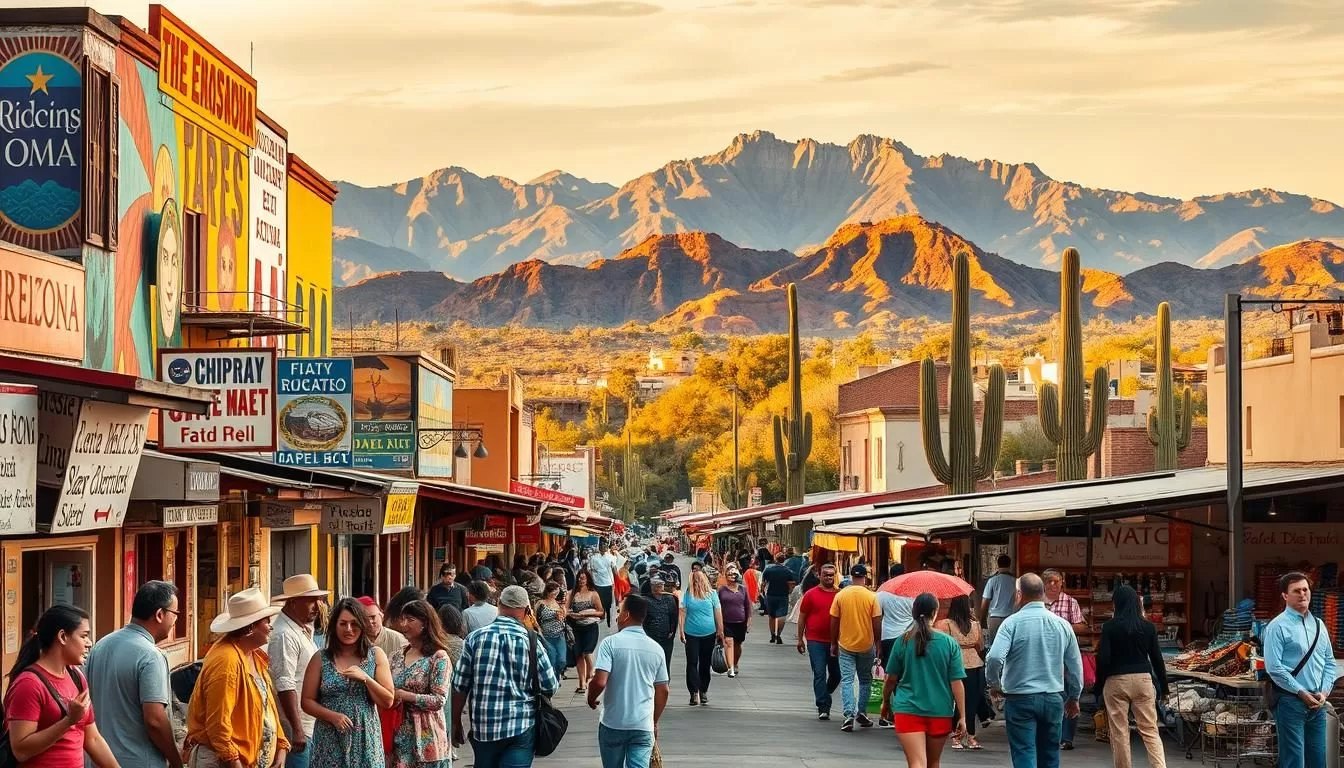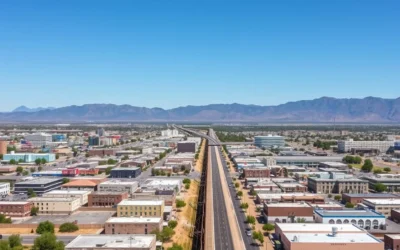✓ Accommodations ✓ Flights ✓ Rental Cars ✓ Tours & Activities
You might be surprised to learn that Arizona is a melting pot of languages. While English is the official language, the state’s diverse population speaks a multitude of languages.
The state’s unique geographical position and historical development have contributed to its rich linguistic diversity. With a population of approximately 7.36 million residents, Arizona is home to people from various backgrounds, including Native American tribes and immigrants from different parts of the world.
About 26.6% of the population speaks a language other than English at home, making it essential for businesses and government agencies to understand the state’s linguistic diversity to effectively communicate with all residents.
The Linguistic Landscape of Arizona
As you explore Arizona, you’ll discover a rich linguistic heritage shaped by its history, immigration patterns, and indigenous cultures. This diversity is reflected in the various languages spoken across the state.

English as the Official Language
English holds official status in Arizona, established through a voter-approved amendment to the state constitution known as Proposition 103 in 2006. This designation underscores the importance of English in official contexts, communication, and daily life for many Arizonans.
A State of Diverse Voices
Arizona is home to a significant number of residents who speak languages other than English. Approximately 26.6% of residents aged five and above speak a non-English language at home. The state’s linguistic diversity includes international languages and several indigenous languages spoken in the region for centuries. This diversity creates opportunities and challenges for businesses, government agencies, and community organizations. Effective communication across language barriers is crucial for providing equitable access to services, education, healthcare, and civic participation.
- The state’s position bordering Mexico significantly contributes to its linguistic character, with Spanish being the most widely spoken non-English language.
- Arizona’s diverse voices include not only international languages but also indigenous languages that have been spoken in the region for centuries.
- Understanding the distribution and prevalence of various languages helps organizations develop appropriate translation and interpretation strategies.
Arizona’s Immigration History and Language Evolution
As you explore Arizona’s immigration history, you’ll discover how it has contributed to the state’s language evolution. The state’s unique history has shaped its linguistic landscape.
Early Settlement Patterns
Arizona’s early settlement was marked by the presence of Native American tribes, particularly the Apache, who resisted European expansion until the late 19th century. This resistance, combined with the challenging landscape, limited the initial influx of immigrants to the region. As a result, the area remained largely uninhabited until the late 19th century.
Native American Linguistic Influence
The Native American population has had a lasting impact on Arizona’s linguistic landscape. Languages such as Navajo, Apache, and Hopi continue to be spoken by a significant part of the population. These indigenous languages represent some of the most vibrant language communities in the United States.
Modern Immigration Waves
The 20th century saw significant changes in Arizona’s linguistic landscape due to increased Hispanic immigration, primarily from Mexico. This wave expanded the Spanish-speaking population. More recent waves have introduced languages from Asia, Africa, and the Middle East, further diversifying the state’s language profile.
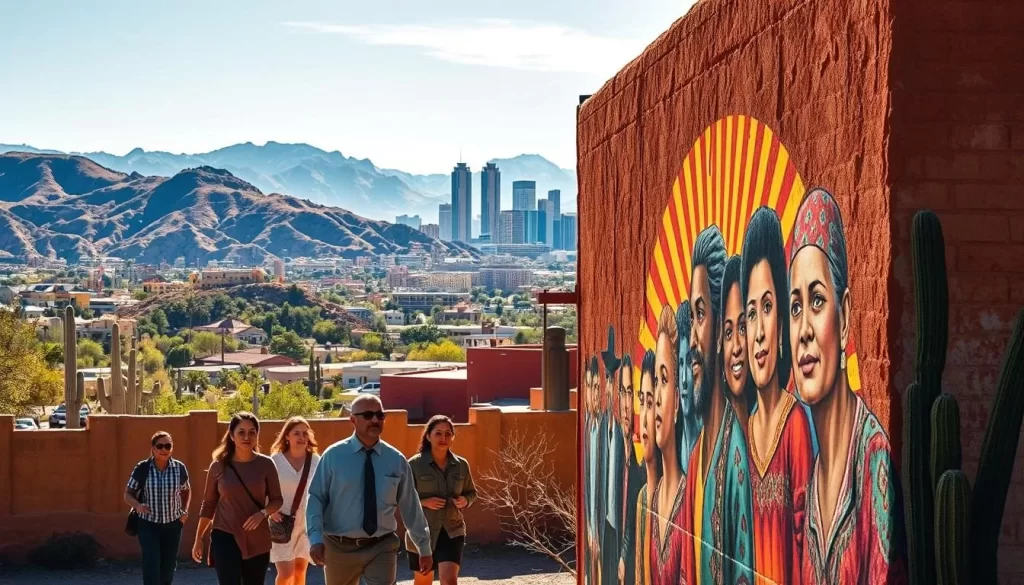
Arizona, United States: Official and widely spoken languages
Arizona is home to 7.36 million residents, with 26.6% speaking a non-English language at home. English is the official language, but the state’s linguistic diversity necessitates language access services for those with limited English proficiency.
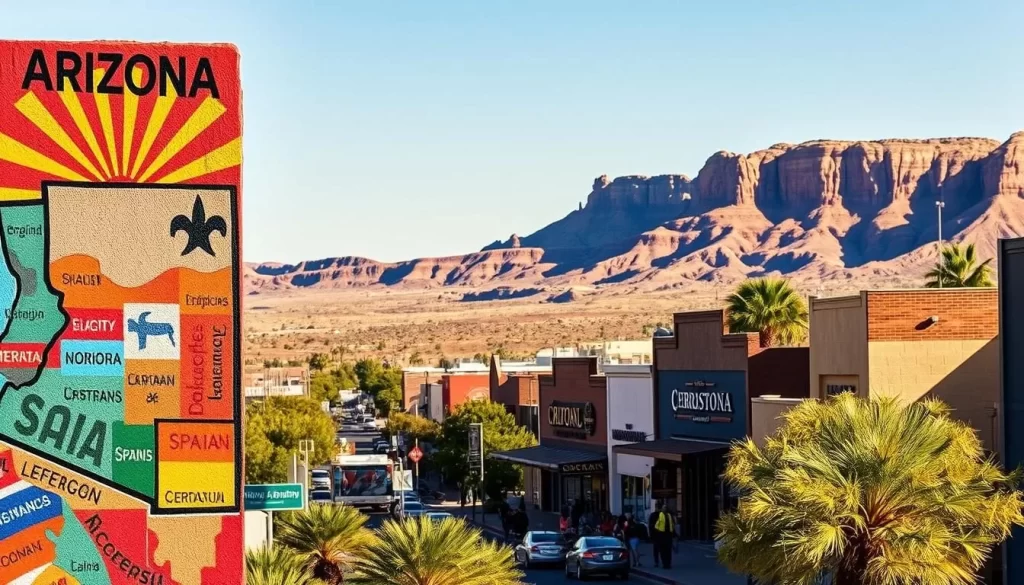
Top 10 Languages Spoken in Arizona Besides English
Beyond English, Arizona hosts a vibrant tapestry of languages spoken by its residents. The state’s linguistic diversity is a reflection of its rich cultural heritage and its position as a destination for immigrants from around the world. This diversity is evident in the numerous languages spoken across the state, with some languages having a significant number of speakers.
Spanish: The Most Prevalent Non-English Language
Spanish is the most widely spoken non-English language in Arizona, with approximately 1.36 million speakers, representing over 20% of the state’s population. This significant presence is a result of both historical influences and ongoing immigration patterns. The large Spanish-speaking community contributes to the state’s cultural and economic fabric.
Spanish language services are in high demand across various sectors, including education, healthcare, and government.
Navajo: Arizona’s Indigenous Linguistic Heritage
Navajo is the second most widely used non-English language in Arizona, with an estimated 84,467 speakers, making up about 1.25% of the population. This highlights Arizona’s important Native American linguistic heritage. Efforts to preserve the Navajo language are crucial for maintaining the cultural identity of the Navajo community.
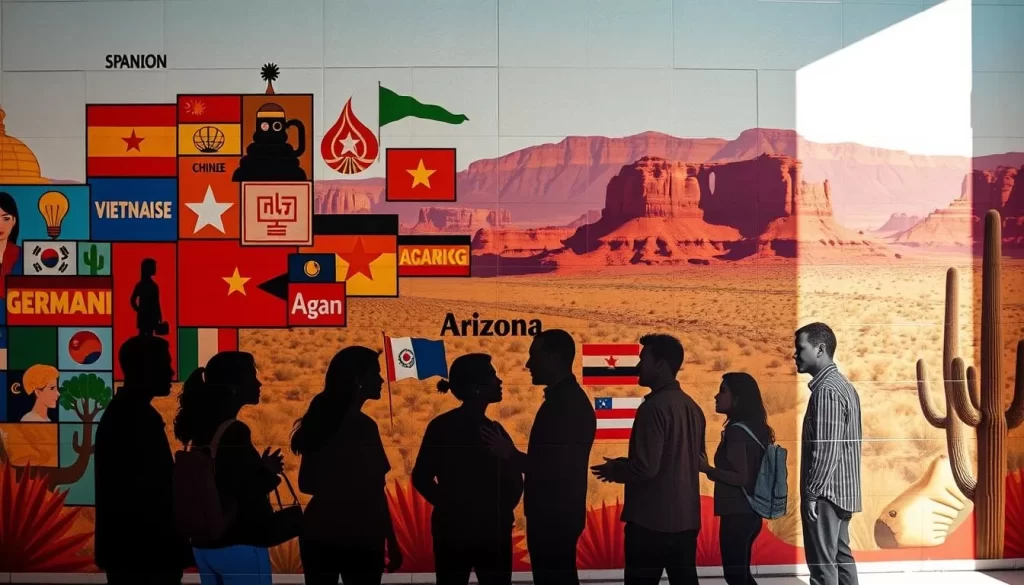
Chinese (Cantonese and Mandarin)
Chinese, including both Cantonese and Mandarin, is spoken by around 35,526 Arizona residents, representing nearly 0.53% of the population. The presence of Chinese languages demonstrates the growing diversity of Asian language communities in the state. This community contributes to Arizona’s cultural and economic diversity.
Other Native American Languages
Arizona is home to numerous other Native American languages, with around 28,909 speakers, making up nearly 0.43% of the state’s population. These languages are an important part of Arizona’s cultural heritage, reflecting the state’s indigenous history.
Tagalog (Including Filipino)
Tagalog, including Filipino, is spoken by an estimated 26,381 Arizona residents, representing just shy of 0.40% of the population. This substantial presence reflects immigration patterns from the Philippines. The Tagalog-speaking community adds to the state’s linguistic diversity.
Arabic
Arabic is spoken by approximately 23,294 residents in Arizona, making up nearly 0.35% of the population. The Arabic-speaking community is another example of the state’s diverse linguistic landscape.
Vietnamese
There are about 22,073 Vietnamese speakers in Arizona, giving them a population share of close to 0.33%. The Vietnamese community contributes to the state’s cultural richness.
German
German is spoken by approximately 18,169 Arizonans, representing nearly 0.27% of the population. The German-speaking community is part of the state’s diverse linguistic tapestry.
French (Including Cajun)
Around 16,567 Arizona residents speak French (including Cajun), making up just a little bit shy of 0.25% of the population. The French-speaking community is another facet of the state’s language diversity.
Hindi
Hindi is the tenth most widely used non-English language in Arizona, with an estimated 14,505 speakers, making up nearly 0.22% of the state’s population. The Hindi-speaking community is a significant part of the state’s linguistic diversity.
The linguistic diversity in Arizona reflects the state’s position as a melting pot of cultures. Each language community contributes to the state’s cultural richness and creates specific needs for language access services across various sectors.
Language Demographics and Statistics
Understanding the linguistic diversity in Arizona requires a closer look at the state’s language demographics and statistics. As you explore the nuances of language use in Arizona, it becomes clear that the state’s population is characterized by a significant degree of linguistic diversity.
Population with Limited English Proficiency
Approximately 9.52% of Arizona’s population, which translates to about 700,405 residents, are considered to have limited English proficiency (LEP). This demographic requires specialized language access services to ensure equal participation in various aspects of life, including education, healthcare, and civic activities.
Language Distribution Across Arizona
Language distribution varies significantly across Arizona, with border communities and urban centers showing higher concentrations of Spanish speakers. Native American languages are more prevalent in and around tribal lands, particularly in northeastern Arizona where Navajo is widely spoken.
| Language Group | Prevalence | Regions |
|---|---|---|
| Spanish | High | Border communities, urban centers |
| Native American Languages | Moderate | Tribal lands, northeastern Arizona |
| Asian and Middle Eastern Languages | Varied | Urban areas like Phoenix and Tucson |
The Importance of Language Services in Arizona
In Arizona, the diverse linguistic landscape necessitates the use of professional language services to bridge the communication gap. With many languages spoken, the need for reliable translation and interpretation services is paramount.
Translation and Interpretation Needs
Acutrans offers professional interpretation services covering over 200 languages, including on-site, over-the-phone, and video remote interpretation. Their specialty programs for healthcare and legal sectors ensure that communication is clear and effective.
- Healthcare organizations face challenges in providing language access, as miscommunication can have serious consequences.
- Legal and judicial systems require accurate interpretation to ensure due process.
Industries Requiring Language Support
Various industries in Arizona require language support, including healthcare, legal, education, government, and businesses
- Government agencies need translation services for public documents and websites.
- Businesses recognize the market advantages of providing multilingual services.
Conclusion
The diverse linguistic landscape of Arizona requires a thoughtful approach to language access and communication. As the state’s population continues to evolve, so too will its linguistic diversity. Businesses and service providers must adapt to meet the needs of Arizona’s diverse communities.
Embracing this diversity is not just a matter of compliance; it’s an opportunity to build trust, foster inclusivity, and expand your reach in the market. By investing in professional translation and interpretation services, you can bridge the communication gap and ensure that language is not a barrier to accessing your services.
As Arizona continues to grow and evolve, understanding its linguistic landscape will be crucial for effective communication and service delivery. By prioritizing language access, you can stay ahead of the curve and build stronger relationships with the communities you serve.
The above is subject to change.
Check back often to TRAVEL.COM for the latest travel tips and deals.
